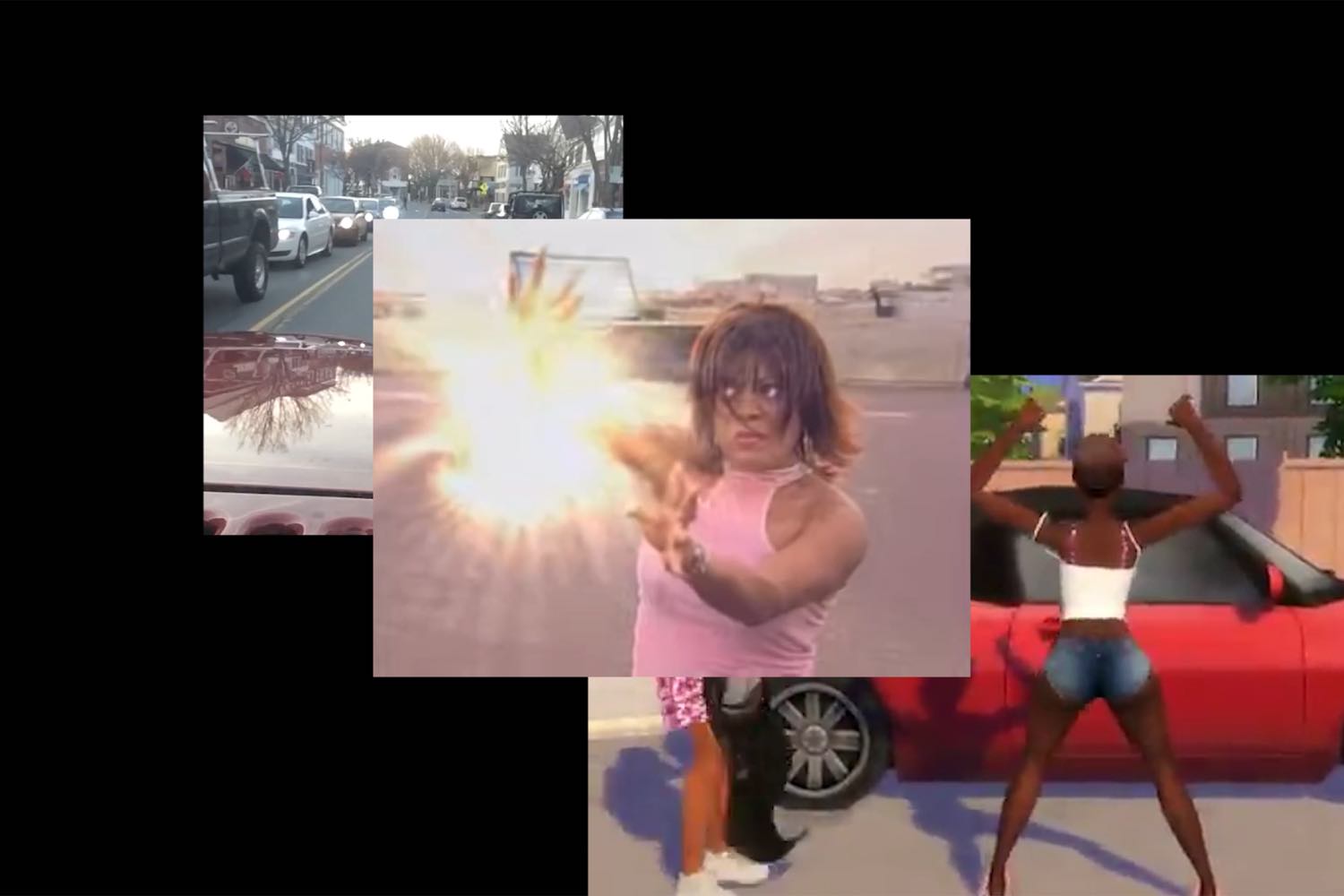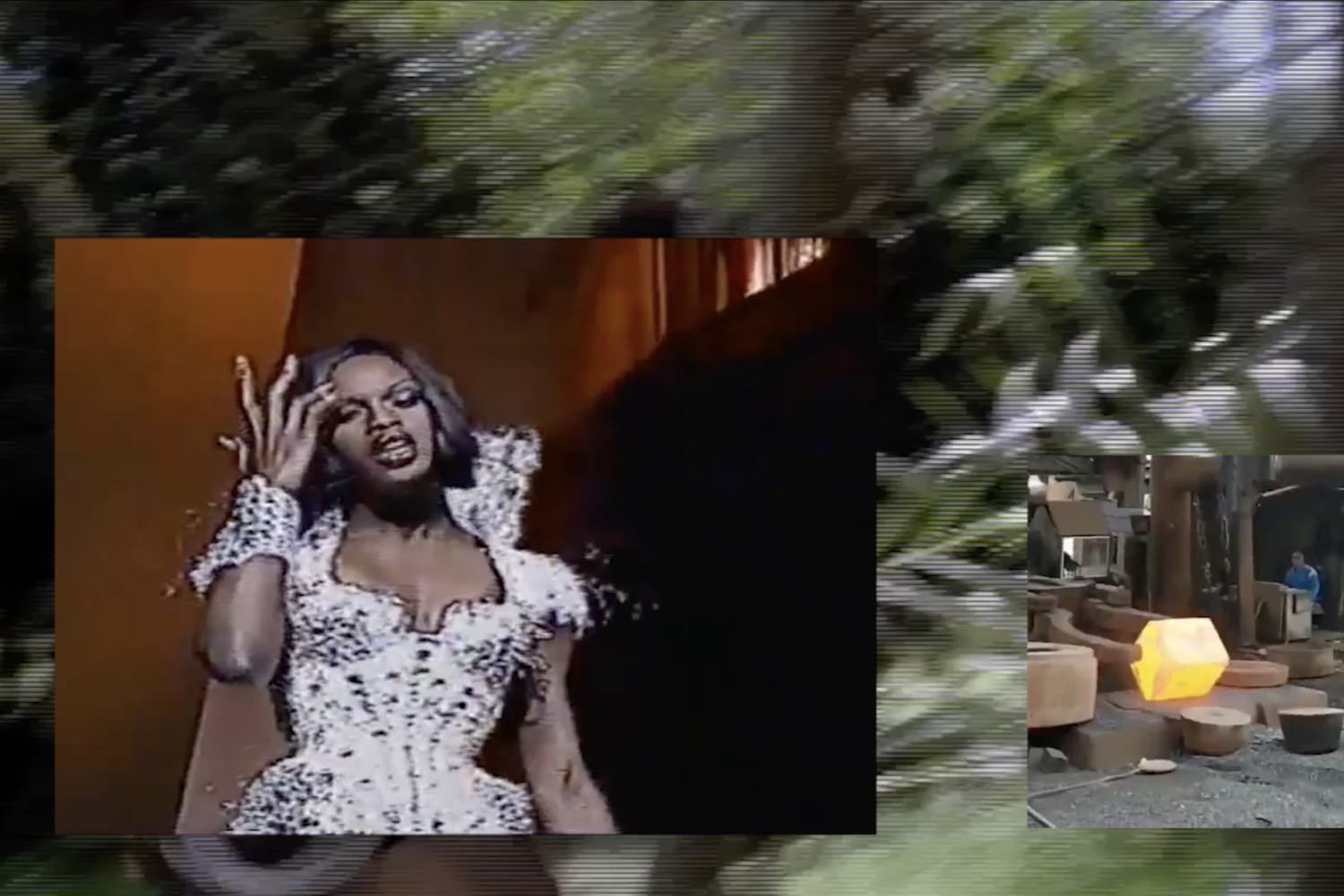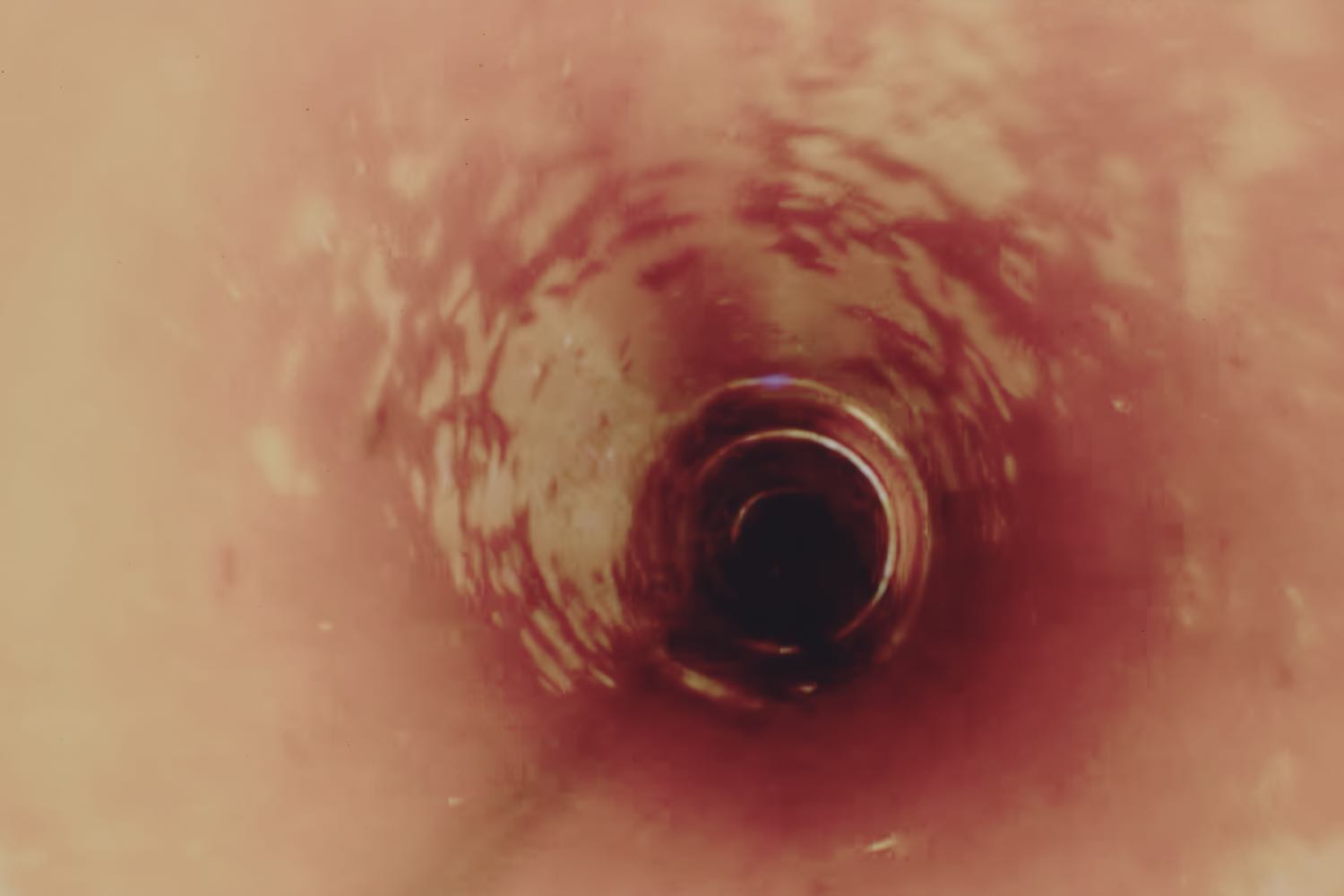Start with the opening scene of Spike Lee’s 1996 comedy Girl 6, in which an as yet no-name aspiring actress, portrayed by Teresa Randle (who had already achieved “it girl” status at the time of the film’s release), sits down for a screen test in hopes of landing a starring role with an impatient Quentin Tarantino, played by himself. Tarantino, performing his real world celebrity persona, asks Randle, performing what we can imagine might have been her former self, to say some lines. She does; he’s unenthusiastic. He then says something like, “Okay, cut to the chase: take your top off. It’s needed for the role.” No-name Randle pauses and replies, “What? My agent didn’t say this is part of the gig.” Tarantino, annoyed, whitemansplains that yes, it is part of the role. He “needs” to see her tits as a part of the business, and he has upwards of fifty other Black women outside that door aspiring to play the part. So, if she doesn’t want to strip, she should stop wasting his time and find another profession.
No-name Randle’s initial reply is one of insolence. She thought that she was in the room with Tarantino because she was good at her art. But then she acquiesces, as she needs this gig to pay rent, and so down both shoulders, slowly, she slides her blouse, as if it was cotton blended with slime. Tarantino, and we as viewers, observe her discomfort and her nudity for a few seconds before she exclaims, “I can’t do this!” She pulls up her shirt and bursts out of the rehearsal room and through the crowd of, as Tarantino promised, about fifty other Black women with no name waiting to be SEEN.
What happens next — and for the rest of the film — is that this no-name actress decides the most efficient way to earn money at the least expense to her dignity is to become a phone sex operator rather than aspiring to the fine art of being a serious actress. Thus, under the tutelage of a savvy and bossy madam played by a very hot 1990s Jennifer Lewis (who today is many scrollers’ favorite great-aunt on the internet for her original meme-song “I-don’t-want-nobody FUCKIN-wit’ meeeee / in-these-streets!”), no-name actress rebrands herself as the eponymous Girl 6.
This film is just one of the many citations that appear in Ebun Sodipo’s Nasty Girl (The Sharpest in Town) (2023) and Nasty Girl 2 (The Beast) (2024), a duo of video works that collage together found footage that she has sourced from the far corners of Tumblr, one of the places where Black culture lives on the internet. Where and what is Black internet culture, exactly? A possible response: I can’t tell you; you just had to be there. Another possible answer: the Black internet does not exist in a specificity of form or in the aesthetic of an image, but in the mechanisms of circulation through which the image travels. Meaning, Black internet perhaps does not exist in a stable format, but simply arises when (at least) one Black user transfers data to (at least) one other.
Sodipo also cites a clip from Girl 6 in Nasty Girl 1 (2022), in which one of the girls (Girl 75 in this instance) is on the phone, talking or rehearsing how to construct a compelling sexual fantasy for a listener who she hopes to keep on the line because the longer he listens, the more money he pays. Sodipo’s video works could be interpreted as rehearsing or processing or trying to communicate this complex meeting point — call it an intersection — of three big problems for the single Black woman in a modern/postmodern metropolis. First, the compulsion to generate capital (I need this gig!). Second, the slimy fact of being viewed as a disposable object of desire by the dominant power structure that controls the remittance of that capital (Tarantino’s impatience for an actress’s discomfort). And third, a language problem – how to use your voice, and to whom you bother to speak your condition.
Girl 6 and Sodipo’s Nasty Girl series, along with much of the Black feminist literature that Sodipo devours, articulates this intersection of dilemmas in a capitalist patriarchy where Black womens’ presence is required for society to function, albeit as an object of resentment. What I have noticed in this literature that Sodipo reads, such as Saidiya Hartman’s Wayward Lives, Beautiful Experiments (2019), is that Black women have tended to open possibilities for themselves through activating the mechanism that is also a site of the violence inflicted upon them: their own bodies. And in many cases, using the body to network language, by way of the voice, or in a more general sense the creation of text. So, the no-name actress generates her necessary capital, building a support structure for her survival, by speaking as a sex object on the phone. A phone which today has been replaced by the internet, where Sodipo, also an avid consumer of internet culture, is using her artwork to speak to and through the same dilemma that she herself is certainly deeply implicated within, as an emerging artist in an art world which, despite its representational acquiescences, remains tethered to the surpluses of global racialized capitalism. I do not bother to state this as a criticism, but as the simple fact of a condition.
In Sodipo’s An Other Ending (2023), the voice is layered over a rolling barrage of disparate internet-quality images and speculates on what it would take to see the death of whiteness, and this voice links whiteness and capitalism as co-constituted. To paraphrase: perhaps whiteness will end when the last coal furnace breaks; perhaps it will end when great thinkers admit that violence against women is always eroticized; and perhaps it will end when the last English-speaking person dies. It is a seductive proposition to think that this language of the British, and of the international art world, could become extinct, obsolete, and no longer necessary. Sodipo returns often to these speculations of mythic proportions where the world as we know it breaks. In her film works, where she herself (as in Celeste – She of the Sea, 2023), her friends (Atlantic Cruises – A Rest Stop, 2021), and her favorite Tumblr meme girls appear, women come to the city hoping to live long enough to see the end of capitalism while at the same time knowing they will never survive if they don’t have some money.
Perhaps this is Sodipo’s exposition on what a Nasty Girl actually is: one who confronts the metaphysical dilemma of compulsory participation in one of Europe’s most insidious inventions–modernism–with the relentless unattachment of a phone sex worker. To survive the city, she becomes like a jellyfish, a gorgeous supple predator like the one who appears in Nasty Girl (The Sharpest Girl Town) out on the street, with her friend, exclaiming “WE SUCKIN’ EVERYBODY’S DICK! WE TAKIN’ EVERYBODY’S MAN!” Hers is a carefree, brash obscenity that respectable people tend to shy away from because they don’t want to risk their status in the capitalist hierarchy. A Nasty Girl maybe does not see a risk as a risk at all, because what is the worst that could happen? The end of this order of things?
I told Sodipo that I find the figure of a Black woman artist in the international art world these days fascinating, given the discourse now circulating within it — particularly the increasing inclusion of Black studies in museums and galleries. Why would this be weird? Because a defining feature of Black study is an examination of the fallout of one of the biggest and most lasting violences on Black women–the transatlantic slave trade and the capital that Europe extracted from it–and a lot of this value is still, to this day, being held in the form of artworks. So how ironic is it that art can still also be seen as a liberatory mechanism by those who theorize oppression? How can art be a form that concretized the violence of capital, while at the same time serve as an opening for the possibility of joy, of creation, of ecstatic experience? Who would choose to be an artist in the midst of this metaphysical dilemma?
When I spoke with Sodipo, who is working across a variety of mediums besides video, also collage, installation, and performance, she located her investment in art not in any particular form or technical process but rather in a desire to communicate. Here, again, I find myself, through Sodipo, tapping into the network and noting how the transfer of information and text creates both community and possibility. Like I mentioned earlier in this text about theories of the Black feminine, I recognize in Sodipo’s work, and also in her position as an artist making that work in this international art-world context, a compulsory position of needing to open a possibility for herself, and doing so by activating the mechanism that is also the site of the violence. I do not yet have language for why desire, seduction (Sucking everybody’s dick! Taking everybody’s man!), and obscenity is such a frictionless route to creating this opening, but if pressed to speak, I would, thanks to Sodipo, simply flick through the pile of Tumblr images she has assembled in the Nasty Girl series. These images, to Sodipo, are not Black because of the people represented inside the frames, but become Black through the transfer of these images from the computer of one person living inside the racial construction of Blackness to another person situated somewhere else inside that construction. A collaged network of situatedness. Because these situations are not fixed in place, and for that matter nor is the construction, the metaphysics of living in that condition of being would necessarily have to include openings and possibilities only if through the momentary accident of many disparate parts being in a state of motion simultaneously. And this lack of fixity, as Sodipo’s Nasty Girls display, might be what makes it possible for the site of the violence — the process of extracting capital from an eroticized brutality — to also be a location where those withstanding that violence can experience joy. An obscene proposition, but this obscenity, I think, protects us from any misplaced optimism that the world — yes, even the art one — changes its logics of racial capitalism by increasing its inclusion of Black images.











